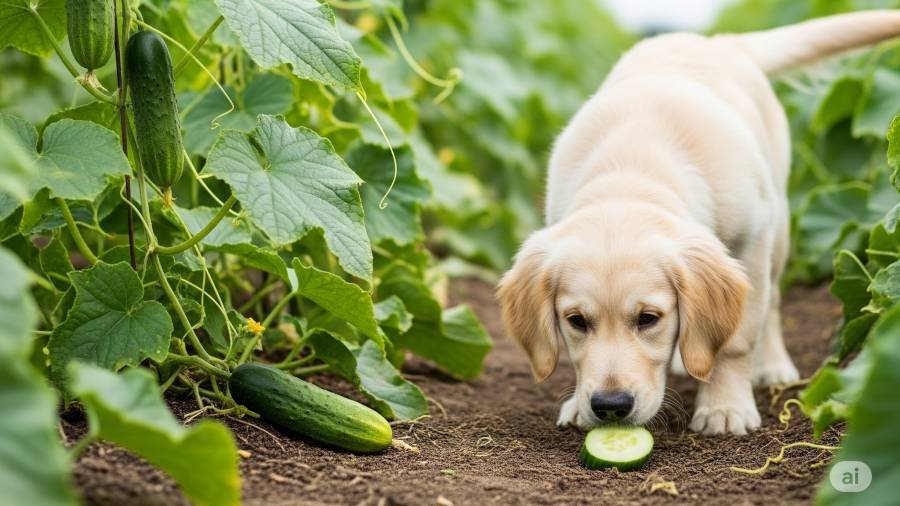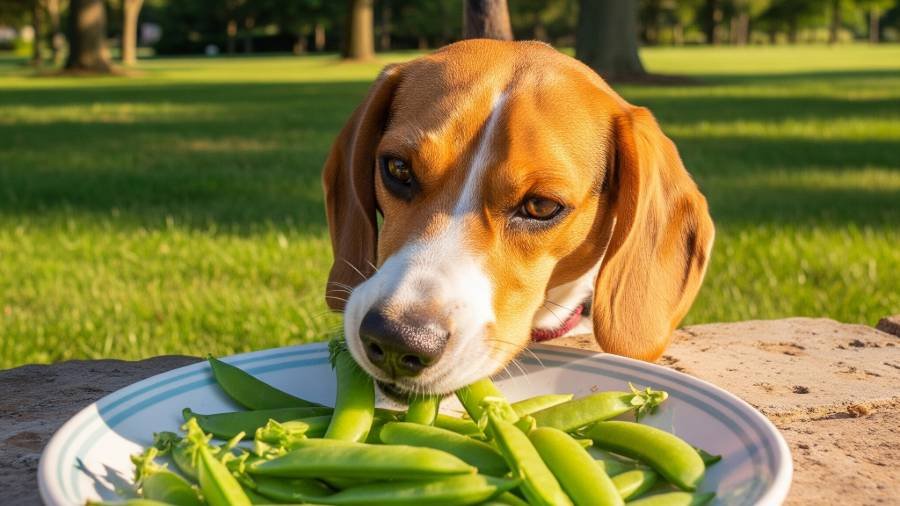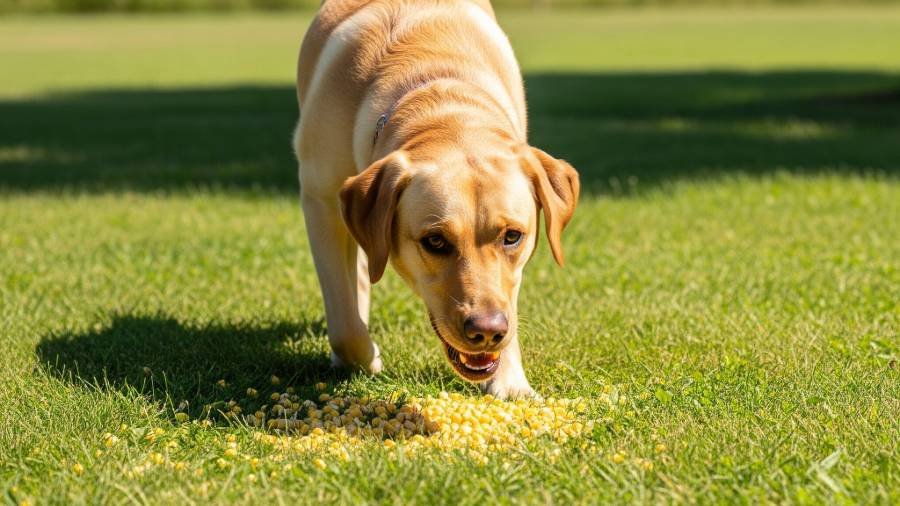Yes, dogs can eat papaya as a safe and healthy treat when given in small amounts, offering a range of benefits when prepared properly.

Potential Benefits of Papaya for Dogs
When dogs can eat papaya in moderation, this tropical fruit provides several advantages that enrich a dog’s diet:
- Rich in Vitamins: Papaya is rich in vitamins A, C, and E, supporting the immune system and promoting healthy skin and coat.
- High Fiber Content: The fiber aids digestion, helping maintain a balanced digestive system and preventing constipation.
- Digestive Enzymes: Contains papain, an enzyme that may assist in breaking down proteins, offering potential health benefits for digestion.
- Antioxidant Properties: Antioxidants like beta-carotene help reduce inflammation and protect against cellular damage.
- Low-Calorie Option: With minimal calories, it serves as a nutritious addition to your dog’s diet, ideal for weight management.
These benefits of papaya make it a valuable choice when you add papaya for your dog as an occasional treat.
Risks and Dangers of Papaya for Dogs
While papaya is safe for dogs, certain risks arise if not prepared or fed correctly:
- Choking Hazard: Large pieces of fresh papaya or the skin can pose a choking risk, especially for smaller dogs if not cut properly.
- Papaya Seeds: Seeds contain small amounts of cyanide, which can be toxic to dogs in large quantities, though a few are unlikely to cause harm.
- Digestive Upset: Overfeeding may lead to diarrhea or upset stomach due to the high fiber content and natural sugars.
- Allergic Reactions: Though rare, some dogs may experience itching or gastrointestinal distress as an allergic response to papaya.
- Pesticide Exposure: Non-organic papaya may carry residues, requiring thorough washing to avoid potential health issues.
- Sugar Content: Excessive amounts could affect dogs with diabetes, necessitating moderation.
How to Safely Feed Papaya to Dogs
To ensure papaya is a safe treat, follow these guidelines when feeding your dog papaya:
- Wash Thoroughly: Rinse fresh papaya under water to remove dirt, pesticides, or wax, even if organic, to protect your dog’s health.
- Prepare Papaya for Dogs: Peel the skin and remove the seeds to eliminate choking hazard and cyanide risk, focusing on the fleshy part.
- Cut into Small Pieces: Chop into bite-sized portions, especially for smaller dogs, to ensure easy chewing and safe swallowing.
- Serve Plain: Offer without added sugars, spices, or toppings to avoid unnecessary calories or digestive issues.
- Feed in Small Amounts: Provide a small amount (e.g., 1-2 tablespoons for small dogs, up to ¼ cup for large dogs) once or twice a week, keeping treats under 10% of daily caloric intake.
- Monitor Reactions: Introduce gradually and watch for digestive upset or allergies over 24-48 hours. Consult a vet if problems arise.
- Consult a Vet: Seek veterinary advice before adding papaya, especially for dogs with diabetes or sensitive stomachs.
Signs of Papaya-Related Issues
If a dog eats papaya improperly or reacts poorly, look for these warning signs:
- Vomiting, diarrhea, or reduced appetite (possible digestive upset from overeating or seeds)
- Difficulty breathing or choking (from large pieces or skin)
- Excessive scratching or swelling (rare allergic reactions)
- Lethargy or unusual behavior (potential cyanide exposure from seeds, though rare)
- Abdominal pain or bloating (intestinal blockage or sugar overload)
If these signs appear, stop feeding papaya and contact a veterinarian immediately. Severe cases may require urgent care.
Expert Opinions
Veterinary experts, including the American Kennel Club (AKC) and the Pet Poison Helpline, confirm that dogs can eat papaya safely in moderation, highlighting its vitamins and digestive enzymes as benefits of papaya for dogs.
They caution against seeds, overfeeding, and recommend consulting a vet for dogs with specific health needs. For more on safe treats, check can dogs eat mango.
Additional Considerations
- Health Conditions: Dogs with diabetes or gastrointestinal issues should limit papaya. Consult a vet first.
- Puppies: Young dogs need smaller pieces and monitoring to prevent choking.
- Dog Preferences: Many dogs enjoy the sweet taste of papaya, but some may not. Adjust based on their response.
- Ripeness: Choose ripe papaya for easier digestion; unripe fruit may be harder on a dog’s stomach.
- Storage: Refrigerate fresh papaya and use within a week; freeze cubed portions for a cool treat.
Safe Treat Alternatives
Instead of relying solely on papaya, consider these safe-for-dogs treats, tailored to enhance a dog’s diet:
- Pears: A small portion of steamed pears offers fiber.
- Beans: A teaspoon of plain cooked beans provides protein.
- Pineapple: A few bite-size pineapple pieces (cored) supply vitamins.
- Greek Yogurt: A dab of unsweetened yogurt supports gut health.
Introduce new treats gradually, monitor for reactions, and consult a vet to ensure a balanced diet.
Dogs can eat papaya as a safe, nutrient-rich healthy treat when fed in small amounts with seeds and skin removed and cut into small pieces, offering benefits of papaya like vitamins, fiber content, and digestive enzymes to support a dog’s diet.
However, risks such as choking hazard from large pieces, toxicity from papaya seeds containing small amounts of cyanide, or digestive upset from overfeeding require careful preparation and moderation.
Puppies or dogs with health issues like diabetes should limit intake unless approved by a vet, and a balanced diet should remain the priority.
Always consult a veterinarian before feeding your dog papaya, and consider safe alternatives for variety.
For more on canine nutrition, explore can dogs eat apples or what fruits can dogs eat.
For additional questions about what dogs can eat or dietary concerns, feel free to ask!





